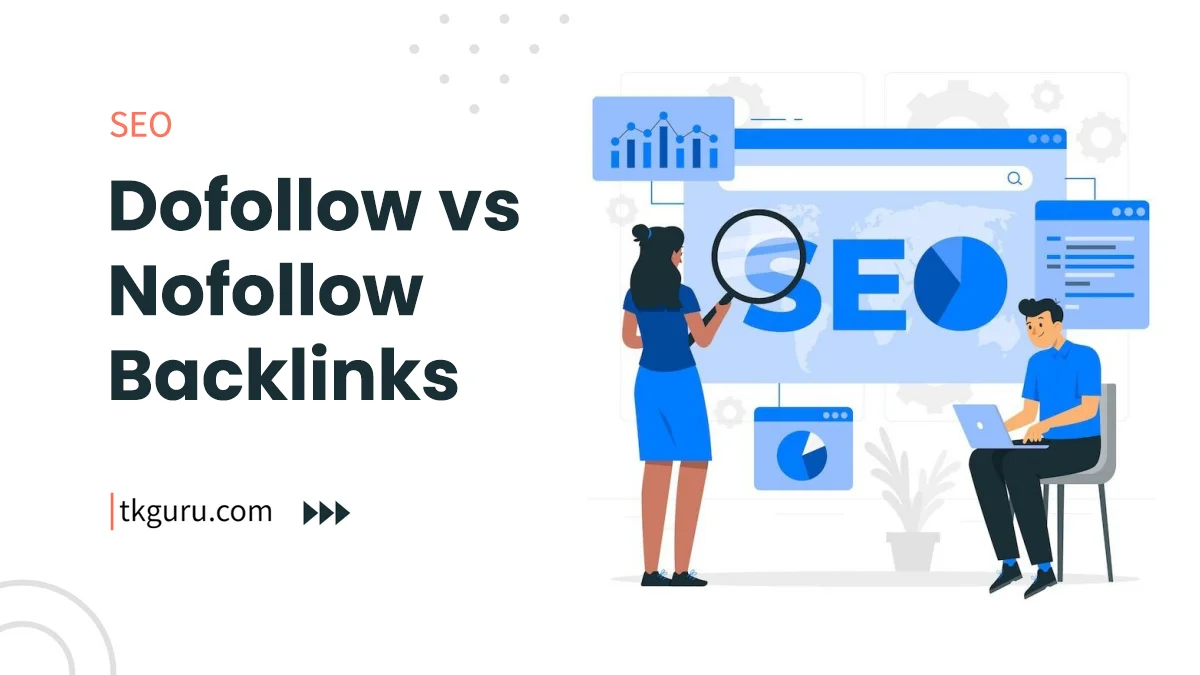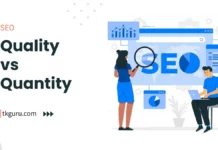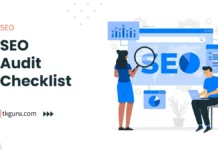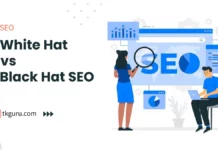Advertisements
Ratings

dofollow-nofollow-backlink
Dofollow vs Nofollow Backlink – In the intricate world of search engine optimization (SEO), backlinks play a pivotal role in determining a website’s authority, credibility, and search engine rankings.
However, not all backlinks are created equal. The ongoing debate revolves around the distinction between dofollow and nofollow backlinks.
In this comprehensive guide, we’ll explore the differences between these two types of backlinks, their individual impacts on SEO, and the strategies for integrating them into your backlink building efforts.
Contents
- 1. Understanding Dofollow and Nofollow Backlinks
- 2. Dofollow Backlinks: The SEO Powerhouses
- 3. Nofollow Backlinks: Their Role and Impact
- 4. The SEO Debate: Dofollow vs Nofollow
- 5. Balancing Dofollow and Nofollow Backlinks: Best Practices
- 6. Case Studies: Real-world Examples
- Conclusion: Insights from Case Studies
- 7. Tools for Analyzing Backlinks
- 8. Common Mistakes to Avoid
- Conclusion: Striking the Right Balance
- Dofollow vs Nofollow Backlink FAQs
1. Understanding Dofollow and Nofollow Backlinks
Before delving into their significance, let’s clarify the basics:
- Dofollow Backlinks: These are regular links that pass on the “link juice” or authority from the linking page to the linked page. In essence, search engines recognize these links as endorsements, potentially contributing to higher search rankings.
- Nofollow Backlinks: Nofollow links, indicated by the
rel="nofollow"attribute, signal to search engines that the link should not influence the linked page’s ranking. These links were initially introduced to combat spammy comments and prevent search engine manipulation.
2. Dofollow Backlinks: The SEO Powerhouses
Dofollow backlinks are often considered the gold standard in the world of SEO. Here’s why they matter:
- Link Equity Transfer: Dofollow links pass on authority and trust from the linking page to the linked page. This transfer of link equity can enhance your website’s overall authority.
- Search Engine Rankings: Search engines consider dofollow backlinks as endorsements from credible sources. The more high-quality dofollow links your website accumulates, the more likely it is to rank higher in search results.
- Content Credibility: Dofollow links from reputable websites signal to search engines that your content is valuable and relevant, contributing to improved organic visibility.
3. Nofollow Backlinks: Their Role and Impact
While nofollow links don’t directly impact search rankings, they have their own set of advantages:
- Referral Traffic: Nofollow links can drive targeted referral traffic to your website. If a user clicks on a nofollow link from a relevant source, they might still find valuable content on your site.
- Brand Exposure: Even if a link is nofollow, it can expose your brand to a wider audience. This exposure might lead to mentions, brand awareness, and even dofollow links in the future.
- Diverse Link Profile: A diverse backlink profile that includes both dofollow and nofollow links appears more natural to search engines, reducing the risk of penalties.
4. The SEO Debate: Dofollow vs Nofollow
The question often arises: which type of link holds more significance? The answer lies in balance.
While dofollow links directly impact search rankings, nofollow links contribute to a holistic online presence:
- Dofollow Links Matter: Dofollow links are crucial for building authority, improving rankings, and establishing content credibility.
- Nofollow Links Matter: Nofollow links are valuable for generating referral traffic, gaining exposure, and maintaining a diverse backlink profile.
5. Balancing Dofollow and Nofollow Backlinks: Best Practices
A successful backlink strategy integrates both dofollow and nofollow links. Here’s how to strike the right balance:
- Content Quality: Prioritize creating high-quality content that naturally attracts both types of links.
- Guest Posting: Guest posts on authoritative websites often lead to dofollow links, while still exposing your brand through nofollow links.
- Natural Mentions: Earning nofollow mentions from influencers and industry peers can result in valuable brand exposure.
- Resource Creation: Develop linkable assets like infographics or guides that can attract both dofollow and nofollow links.
6. Case Studies: Real-world Examples
Case Study 1: The Power of Dofollow Links
Background: A technology blog dedicated to providing insights into emerging digital trends aimed to establish itself as a reputable source of information within the industry.
Challenge: Despite creating high-quality content, the blog faced challenges in gaining significant visibility and authority in a competitive tech niche.
Strategy
- Guest Posting Campaign: The blog collaborated with well-known tech websites to contribute guest posts on trending topics, ensuring the inclusion of dofollow backlinks to relevant articles on their site.
- Content Excellence: The blog focused on creating in-depth, well-researched articles that addressed cutting-edge technology trends and provided actionable insights.
Results
- Authority Boost: The accumulation of dofollow backlinks from reputable tech sources led to a noticeable increase in the blog’s domain authority.
- Search Rankings Improvement: The blog’s articles began ranking higher for competitive tech keywords, attracting more organic traffic.
- Credibility Enhancement: The presence of dofollow links from authoritative sources enhanced the blog’s credibility within the tech community.
Case Study 2: Nofollow Links for Referral Traffic
Background: A fitness and wellness website aimed to reach a broader audience interested in leading a healthier lifestyle.
Challenge: Despite offering valuable fitness advice, the website struggled to attract visitors beyond its immediate circle of followers.
Strategy
- Forum Engagement: The website actively participated in fitness forums, offering expert advice and leaving nofollow links to relevant articles on its site.
- Online Community Contributions: The website engaged in conversations on social media groups dedicated to health and fitness, sharing valuable insights and including nofollow links to its resources.
Results
- Referral Traffic Surge: The nofollow links placed within forums and online communities brought a significant increase in referral traffic to the website.
- Exposure and Brand Awareness: The consistent presence of the website’s links in relevant conversations led to heightened brand exposure among the target audience.
- Diverse Link Profile: The website’s link profile became more diverse with a mix of both dofollow and nofollow links, contributing to a natural and holistic online presence.
Case Study 3: The Balanced Approach
Background: A travel and adventure blog aimed to inspire travelers to explore off-the-beaten-path destinations and embark on unique adventures.
Challenge: In a saturated travel blogging landscape, the blog needed a strategy to stand out and attract an audience seeking authentic travel experiences.
Strategy
- Guest Posting and Content Creation: The blog created both dofollow guest posts for authority and nofollow content that provided valuable travel insights.
- Engagement with Travel Communities: The blog engaged in discussions on travel forums, sharing relevant tips and resources along with nofollow links to its guides.
Results
- Authority Building: The dofollow guest posts contributed to the blog’s authority within the travel niche, boosting its search engine rankings.
- Referral Traffic and Engagement: The nofollow links placed within forums led to increased referral traffic and active engagement from travel enthusiasts seeking information.
- Balanced Link Profile: The combination of dofollow and nofollow links contributed to a well-rounded backlink profile that appeared natural to search engines.
Conclusion: Insights from Case Studies
These case studies underscore the significance of both dofollow and nofollow backlinks in enhancing a website’s visibility, authority, and engagement.
While dofollow links directly impact search rankings and domain authority, nofollow links play a pivotal role in driving referral traffic, boosting brand exposure, and maintaining a diverse and natural backlink profile.
The key takeaway is that a balanced approach, integrating both types of links strategically, can lead to a more comprehensive and effective backlink strategy.
7. Tools for Analyzing Backlinks
Several tools, such as Ahrefs, Moz, and SEMrush, offer insights into your backlink profile, helping you gauge the ratio of dofollow to nofollow links.
8. Common Mistakes to Avoid
- Neglecting Nofollow Links: Dismissing nofollow links can result in missed opportunities for referral traffic and brand exposure.
- Overemphasizing Dofollow Links: Obsessing solely over dofollow links might lead to an unnatural and potentially penalizable backlink profile.
Conclusion: Striking the Right Balance
In the ever-evolving world of SEO, the debate between dofollow and nofollow links should not be seen as a binary choice.
Both types of links have their roles in a comprehensive backlink strategy. Dofollow links fuel authority and search rankings, while nofollow links contribute to referral traffic, brand exposure, and a diverse profile that search engines value.
The key to success lies in balancing both types of links, understanding their unique contributions, and crafting a strategy that integrates them harmoniously.
Dofollow vs Nofollow Backlink FAQs
What is the difference between a dofollow and a nofollow backlink?
A dofollow backlink is a link that passes 'link juice' and authority from the linking site to the linked site.
It has the potential to positively impact the linked site's search engine rankings. In contrast, a nofollow backlink includes a 'nofollow' attribute in its HTML code, indicating to search engines that they shouldn't pass authority to the linked site.
Are dofollow backlinks more valuable than nofollow ones for SEO?
Generally, dofollow backlinks are more valuable for SEO because they contribute to your site's authority and search engine rankings.
They signal to search engines that your site is trusted and relevant. However, nofollow backlinks still have value in terms of referral traffic and exposure, even though they don't directly influence SEO.
When are nofollow backlinks commonly used?
Nofollow backlinks are commonly used for links in user-generated content, like comments on blogs or forum posts.
They are also used for paid links, sponsored content, and any link that the website owner doesn't want to be seen as an endorsement for search engine ranking purposes.
How can I tell if a backlink is dofollow or nofollow?
To check if a link is dofollow or nofollow, you can view the HTML source code of the linking page.
Look for the 'rel' attribute in the anchor tag. If it contains 'nofollow,' the link is nofollow.
Alternatively, browser extensions and online tools can help you identify the type of backlink.
Is it better to have a mix of dofollow and nofollow backlinks?
Yes, having a mix of both dofollow and nofollow backlinks is natural and can be beneficial.
While dofollow backlinks contribute to your site's SEO and authority, nofollow backlinks provide diversity and can drive valuable referral traffic. A natural link profile includes a combination of both types.
Understanding the distinction between dofollow and nofollow backlinks is crucial for implementing an effective link-building strategy.
While dofollow backlinks have a direct impact on SEO, nofollow backlinks offer other advantages, such as traffic and exposure.
Balancing both types of backlinks can contribute to a well-rounded and holistic approach to building your site's online presence.
| Web Hosting | Website |
| WordPress | Google Adsense |
| SEO | Affiliate Marketing |
| Blogging | YouTube |
Recent Posts
- Top 6 SEO Companies in Ahmedabad 2024: Unlock Success with the Top SEO Companies in Ahmedabad
- Top 5 SEO Companies in Kanpur 2024: Discover the Top-Rated SEO Companies in Kanpur
- Quality vs Quantity: The Importance of High-Quality Backlinks
- E-A-T and SEO: Expertise, Authoritativeness, Trustworthiness
Related Tags
difference between dofollow and nofollow backlinks, do follow link example, do follow and nofollow in seo in hindi, do follow backlinks meaning, nofollow links, do nofollow links help seo, rel=nofollow, when to use nofollow links






